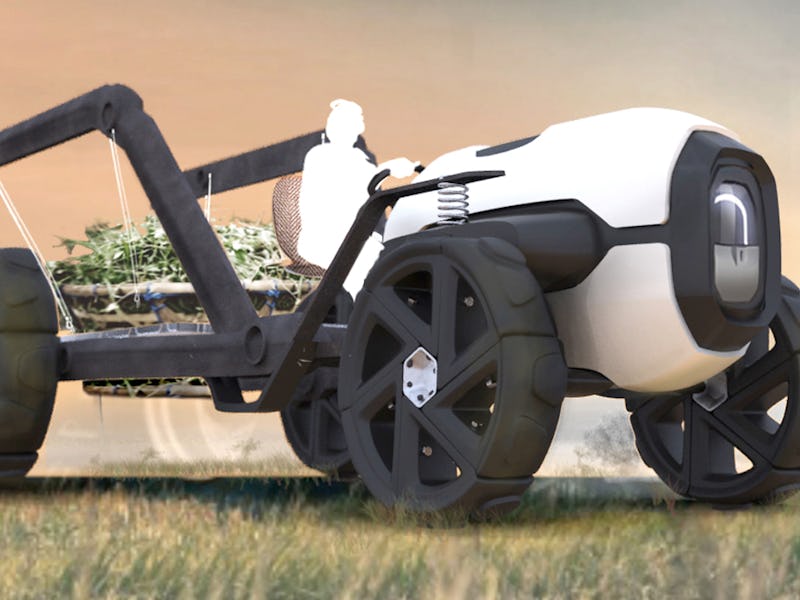Michelin Challenge Design Yields Futuristic Vehicles for the Developing World
Ride'em, electric cowboy.

What’s better than a vehicle that solves a transportation problem? One that solves three. The top prize at this year’s Michelin Challenge Design competition went to a hybrid ambulance/farm truck/taxi, built to withstand the punishing conditions of rural India.
A farming family in India may never save enough money for a personal vehicle, but that’s not what this is. It’s a community vehicle, and it meets a wide variety of community needs. The car can even serve as a street lamp and backup power generator.
Michelin Challenge Design announced the winners of its 2016 competition recently, awarding the most innovative vehicles to solve transportation problems in the developing world.
It’s no wonder the Indian team’s Google Community Vehicle took first place. It’s a truly multi-purpose transportation system that can work the fields when required, move people for extra income in the off-season, and carry the sick or wounded in an emergency.
The Google Community Vehicle does triple-duty.
The wheels are designed for maximum traction on rough roads, and the internal suspension systems make the ride as smooth as possible — especially for human cargo when the vehicle is being used as a stretcher.
Second prize went to a team from Colombia that built an electric-powered ATV for the narrow, winding mountain roads that small-scale coffee farmers must navigate.
Arriero by Edgar Sarmiento García, Colombia.
It’s no accident that their design resembles a horse, complete with saddle — perfect for a llanero in need of a good steed to carry his wares to market. The vehicle comes with modular parts for easy customization and repairs.
For the bronze, a team of designers came up with a pedal-powered bamboo raft. Imagine one of those recreational paddle boats, except sleeker.
Bamboo Recumbent by WooSung Lee and ChanYeop
It’s designed for transportation in the Navotas region of the Philippines, which is prone to flooding. In one city slum, 25 million people live in floating shacks without access to proper transportation or clean water. Trash from landfills fill the streets during the rainy season, and the result is the proliferation of preventable illnesses.
The raft features a water filtration system that operates constantly while the boat is operated. The bamboo itself can be sourced and assembled locally, making the system more affordable for residents.
The competition saw 8,200 entries from 121 countries. The full list of finalists is available on the website.
This year it was all about helping people access cheaper, better, more reliable transportation. Next year? It’s all about speed.
The 2017 challenge asks designers to come up with a race car worthy of the prestigious 24 Hours of Le Mans endurance race.